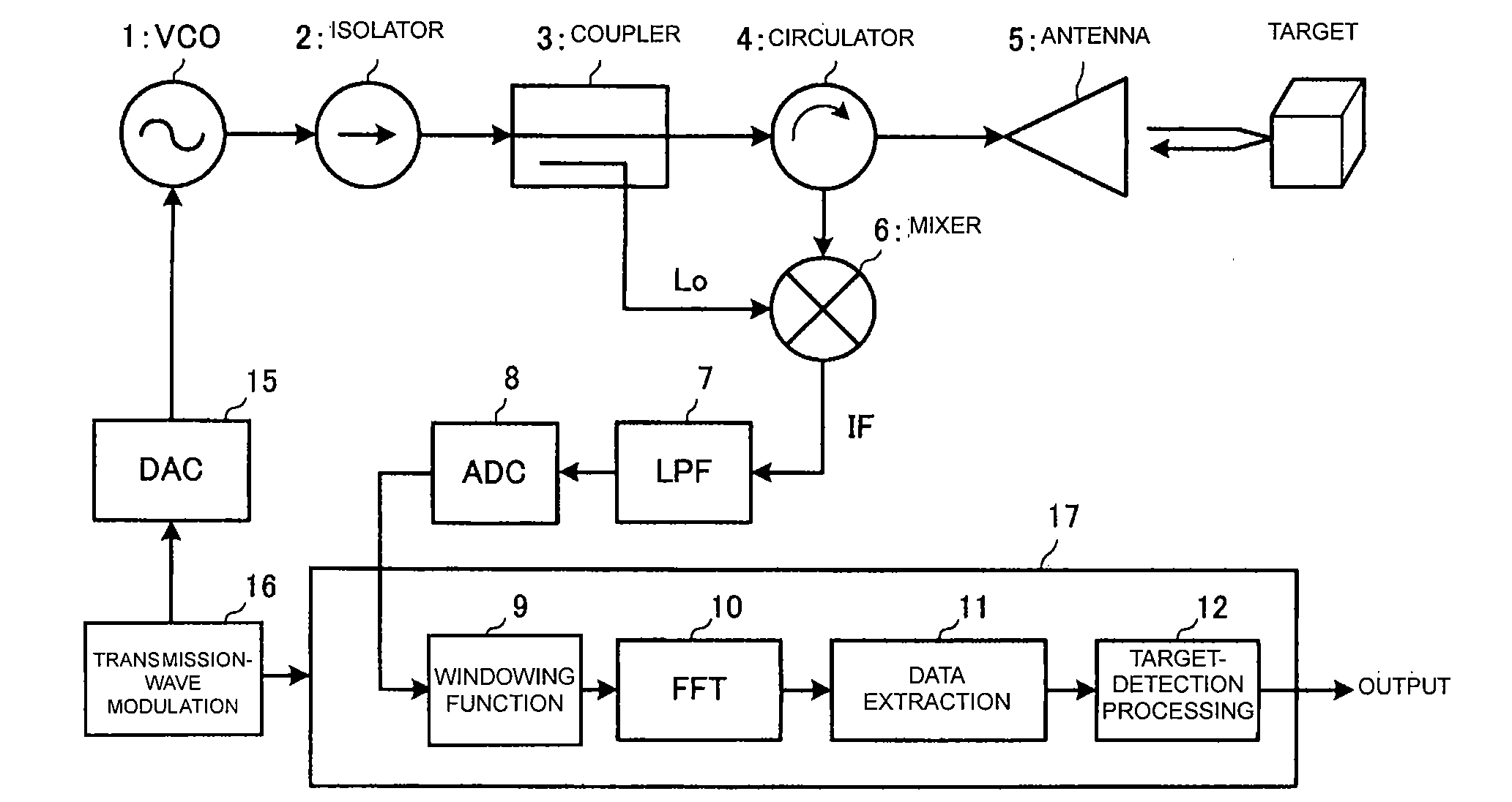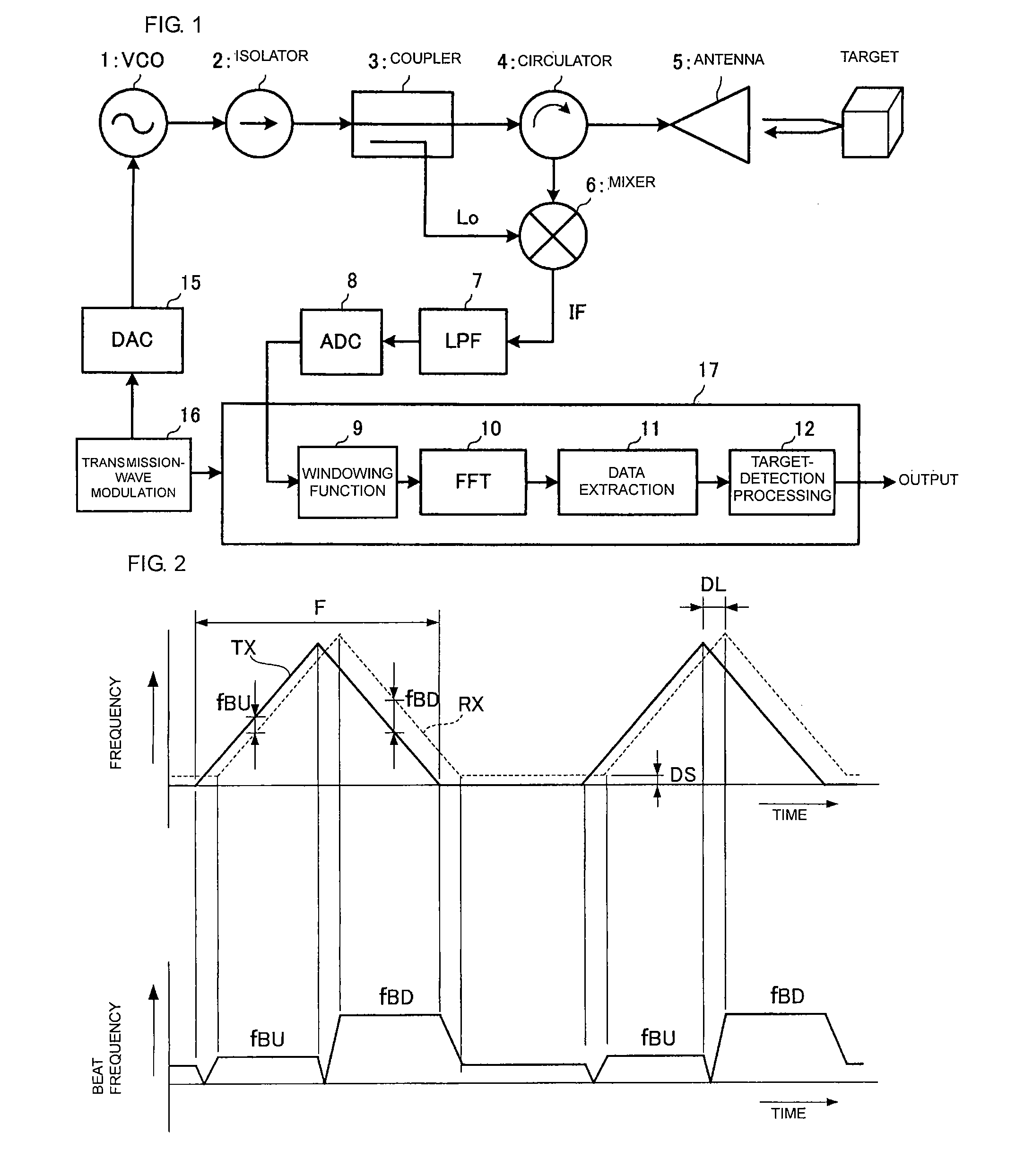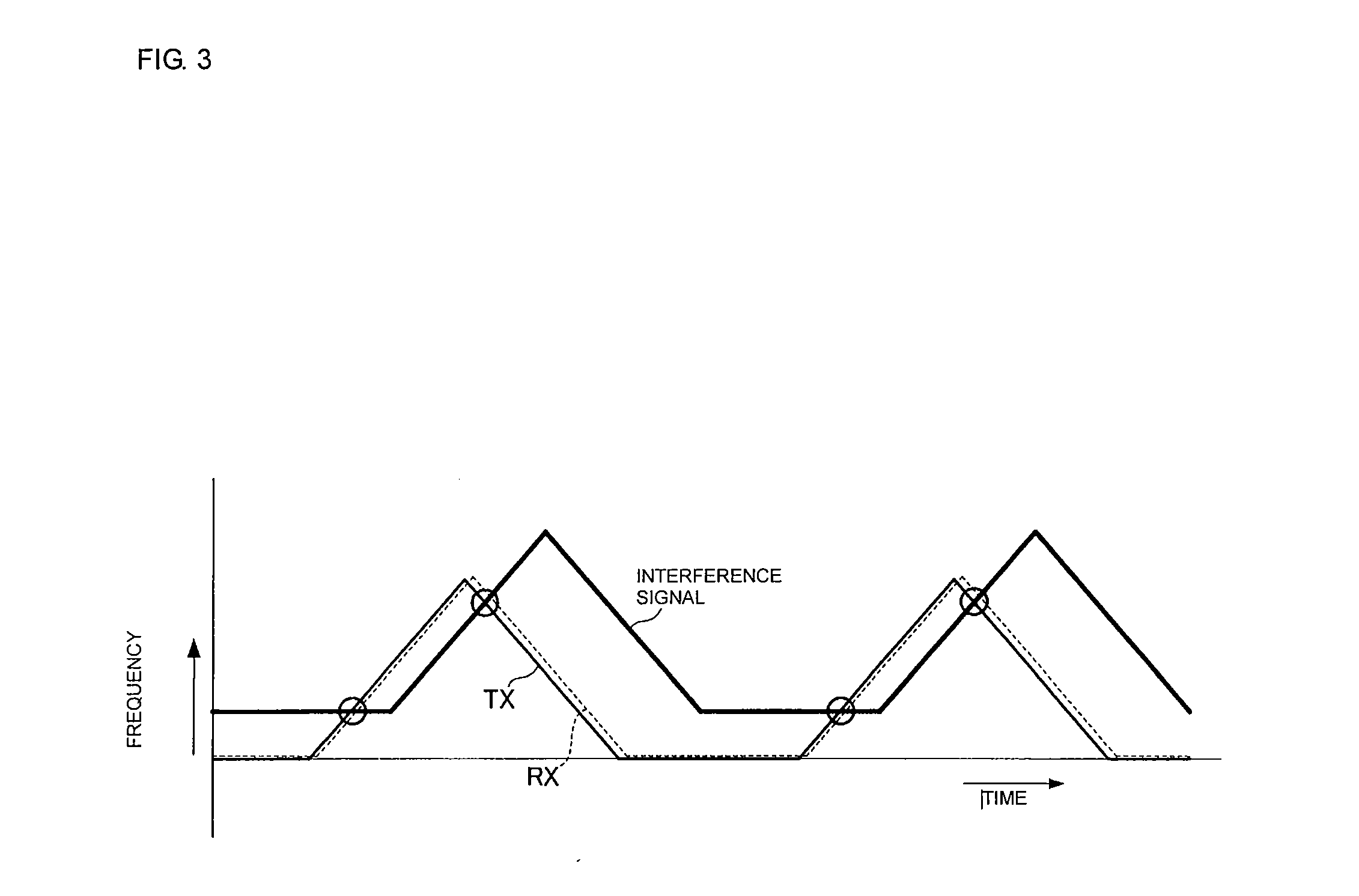Radar
a radar and radar technology, applied in the field of radars, can solve the problems of affecting the detection of targets while a frequency is being changed, affecting the detection accuracy of targets, etc., and achieves the effect of high noise and high noise sta
- Summary
- Abstract
- Description
- Claims
- Application Information
AI Technical Summary
Benefits of technology
Problems solved by technology
Method used
Image
Examples
first embodiment
[0038]A structure of a radar will be described with reference to FIGS. 1 through 8.
[0039]FIG. 1 is a block diagram showing an overall structure of a radar. A transmission-wave-modulating unit 16 sequentially outputs digital data of a modulated signal to a DA converter 15. A VCO 1 changes an oscillation frequency on the basis of a control voltage output from the DA converter 15. Thus, the oscillation frequency of the VCO 1 is FM modulated successively in a triangular wave manner. An isolator 2 transmits an oscillation signal received from the VCO 1 to a coupler 3 and prevents a reflection signal from entering the VCO 1. The coupler 3 transmits the signal which has been routed through the isolator 2 to a circulator 4 and supplies a part of the transmission signal, the part being selected from the transmission signal with a predetermined partition ratio, as a local signal Lo to a mixer 6. The circulator 4 transmits the transmission signal to an antenna 5 and supplies a reception signa...
second embodiment
[0055]Next, a radar will be described with reference to FIGS. 9 through 11.
[0056]FIG. 9 is a block diagram showing an overall structure of a radar. A threshold-setting unit 14 sets a noise threshold in order to extract peaks greater than or equal to the noise threshold as the target peaks when the data extraction unit 11 extracts predetermined peaks from the frequency spectrum. The rest of the structure is similar to that shown in FIG. 1.
[0057]FIG. 10 shows a position of a peak appearing in (extracted from) the frequency spectrum of each beam in the case where electromagnetic wave beams are scanned in the azimuthal direction, and the peak position is indicated by a black dot as a position in the propagation direction of the beam.
[0058]Here, a beam Ba is the beam which has been affected by interference. If peaks are extracted from the frequency spectrum using a stationary threshold regardless of whether interference has occurred, many erroneous peaks are extracted as shown in part (...
third embodiment
[0066]Next, a radar will be described with reference to FIGS. 12 and 13.
[0067]FIG. 12 is a block diagram showing an overall structure of a radar. A spike-noise-detecting unit 13 detects whether spike noise is superimposed on a beat signal or not. A threshold-processing and peak-detecting unit 18 performs processing for setting a noise threshold and processing for peak detection in accordance with detection of the presence or absence of a spike noise as described below.
[0068]The threshold-setting unit 14 sets a stationary (the state in which no interference occurs) noise threshold in order to extract peaks greater than or equal to the noise threshold as target peaks when the threshold-processing and peak-detecting unit 18 extracts predetermined peaks from a frequency spectrum. The rest of the structure is similar to that shown in FIG. 1.
[0069]FIG. 13 is a flowchart showing processing steps of target-peak extraction.
[0070]First, spike-noise detection is performed (S41). If spike nois...
PUM
 Login to View More
Login to View More Abstract
Description
Claims
Application Information
 Login to View More
Login to View More - R&D
- Intellectual Property
- Life Sciences
- Materials
- Tech Scout
- Unparalleled Data Quality
- Higher Quality Content
- 60% Fewer Hallucinations
Browse by: Latest US Patents, China's latest patents, Technical Efficacy Thesaurus, Application Domain, Technology Topic, Popular Technical Reports.
© 2025 PatSnap. All rights reserved.Legal|Privacy policy|Modern Slavery Act Transparency Statement|Sitemap|About US| Contact US: help@patsnap.com



